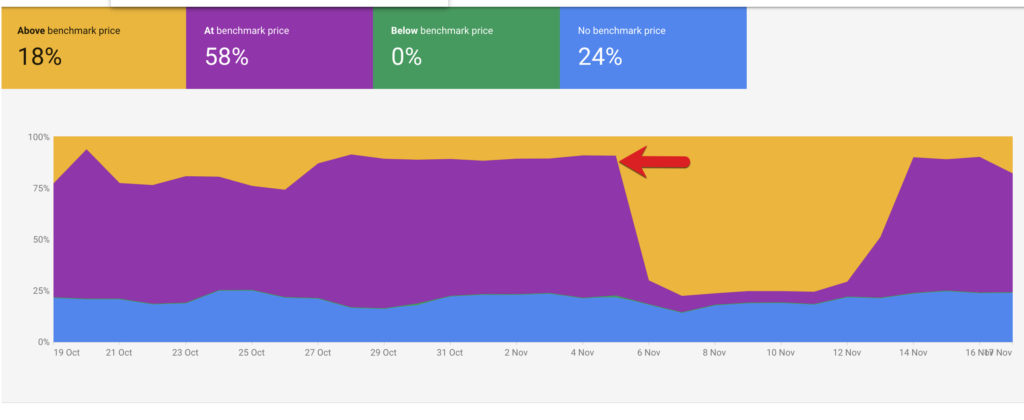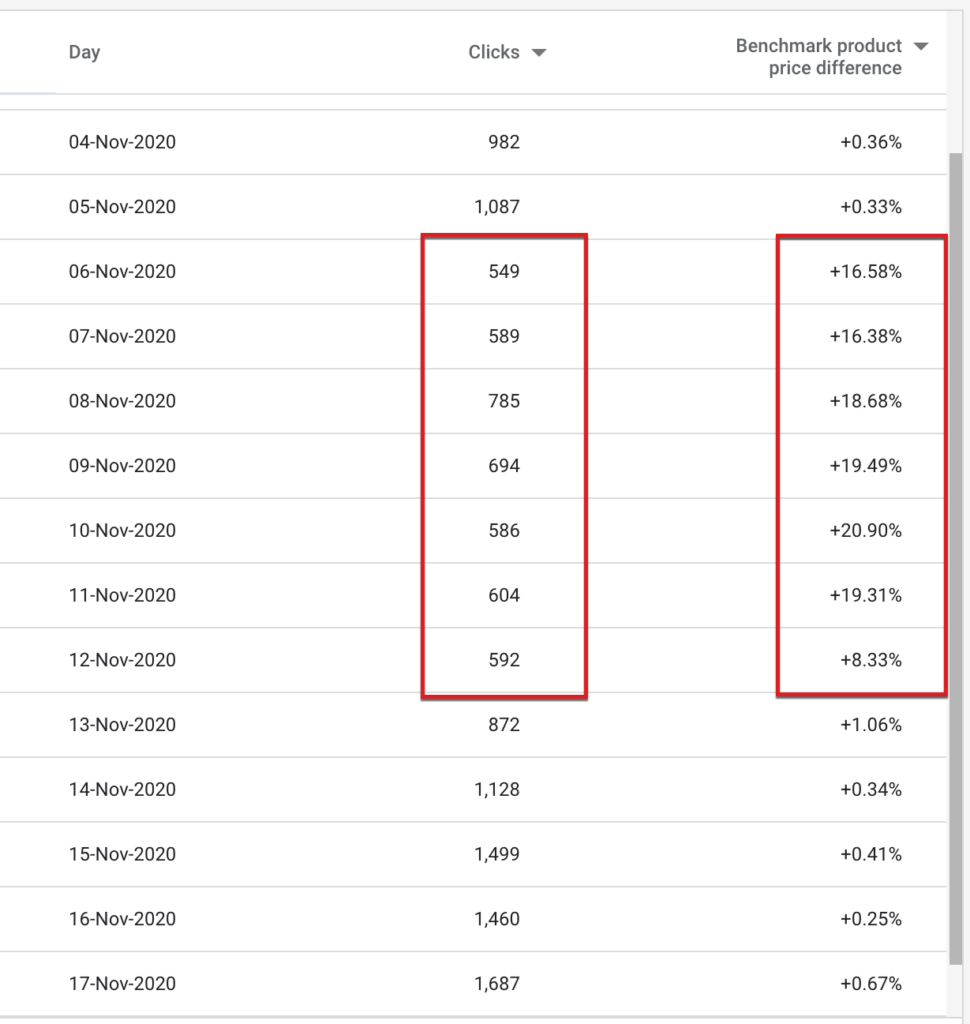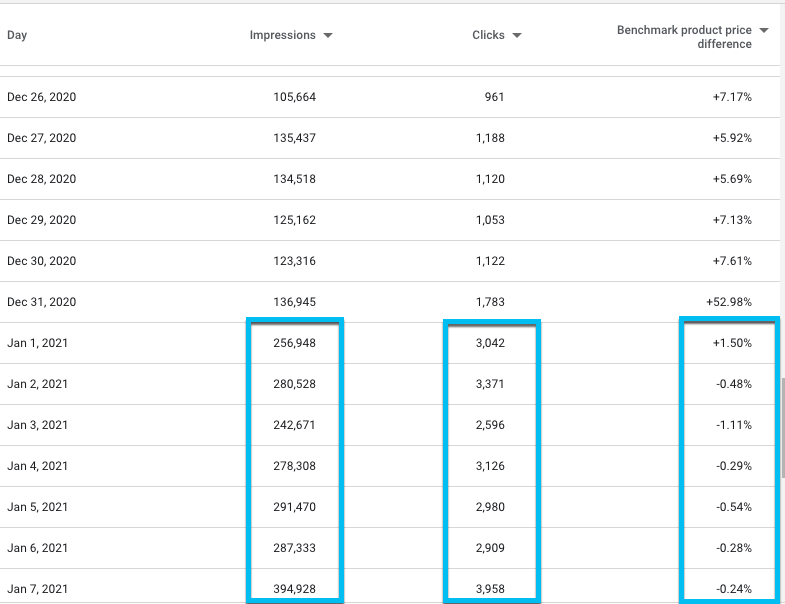Last updated on August 20, 2025
How price competitiveness influences shopping campaign performance – 3 cases
Have you ever wondered why Google Merchant Center lets you compare your product prices to those of other sellers? It is because your price position significantly impacts your Shopping campaign performance. In this article, we’ll explore three interesting cases that show how price benchmark data can explain shifts in campaign performance.
There are two ways your price competitiveness influences your shopping ads performance:
- Price is a ranking factor: advertisers with a better price are more likely to show.
- Price is a conversion factor: advertisers with a better price are more likely to have a higher conversion rate.
Let’s dive into the three cases to see these principles in action.
1. Price is a ranking factor
Case 1: Drop in ad impressions and clicks when competitor lowers its price
Take a look at this advertiser. They noticed significant drops in volume in their shopping campaigns. After analyzing pricing against competitors using the Price Benchmark Report, we discovered that competitors had launched a sale, offering lower prices on the same products. This is easy to spot in the price benchmark report:

Note: This graph is from the Classic version of the Merchant Center. Similar data is now available in Merchant Center Next under Analytics > Products > Pricing.
To analyze the performance of these products relative to their price competitiveness, you can create a custom report in Google Ads:

Want to create this report for your products? Go to your Google Ads account > Campaigns > insights and report > report editor > create report
The impact on the number of ad clicks is easy to spot when we analyze the impressions and clicks during the period their price position changed. The number of impressions went down massively and the number of clicks even more.
Case 2: Volume boost after discounting some products
Another advertiser lowered prices on some products, and the results were immediately visible in the Price Benchmark Report. More products fell into the “at or below benchmark price” category, while fewer were priced above the benchmark.

Note: This graph is from the Classic version of the Merchant Center. Similar data is now available in Merchant Center Next under Analytics > Products > Pricing.
In the sale period, we see the number of impressions and clicks going up:

Want to create this report for your products? Go to your Google Ads account > Campaigns > insights and report > report editor > create report
Conclusion: Price is an important shopping ads ranking factor. Google is much more likely to show your product ads when your price is better than your competitors.
2. Price is a conversion factor
Case 3: How price position influences conversion rate
It’s no surprise: consumers are more likely to buy from your store if your price is lower than your competitors. Your price against competitors changes over time, so it can be helpful to monitor this. We ran a report for an advertiser to analyze the relationship between price position and conversion rates. Products with a positive Benchmark Price Difference (priced higher than competitors) consistently showed lower conversion rates.
This analysis confirmed that lower prices drive higher conversion rates, while higher-priced products lag behind.

Want to create this report for your products? Go to your Google Ads account > Campaigns > insights and report > report editor > create report
To analyze how your price position impacts the conversion rate, you can easily create this report in your own Google Ads account. Make sure to add the Item ID, the Conversion rate and the Benchmark product price difference as columns to your report.
How to optimize your results with price benchmark data?
With price benchmark data, you can do two things to boost your campaigns:
- Segmentation: Save on ad spend by cutting back on products with a bad price position, and focus more on products that are priced well compared to competitors.
- Price optimisation: Find products where lowering the price just a little could really improve their performance.
Make the most of your price benchmark data
Producthero can help you in making your price benchmark data more actionable. Our Price Benchmark Tool helps you monitor your pricing against competitors, all within the Producthero Platform. This integration lets you view both performance data and price benchmarks in one easy-to-use dashboard.
With the Price Benchmark Tool, PRO users can:
- Export data and access benchmark information for each product.
- View price benchmark history in a graph, showing how your price compares to the benchmark over time.
- Use price benchmark labels in your feed to segment campaigns based on pricing performance.
See how easy it is to leverage Price Benchmark data and optimize your pricing strategy.
For more insights, check out our blog: Price Benchmark Data – Use Cases

